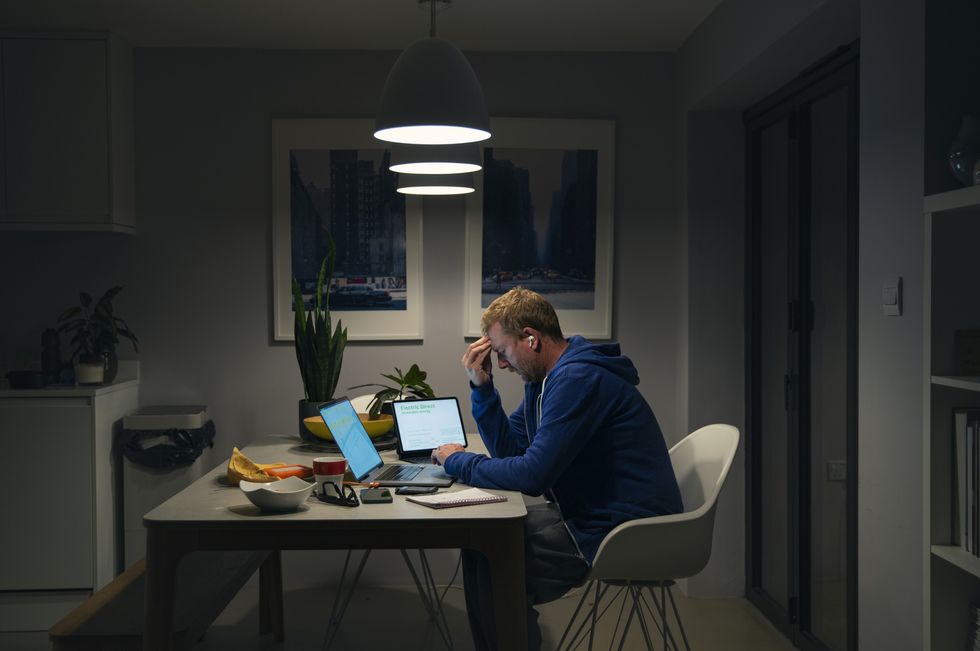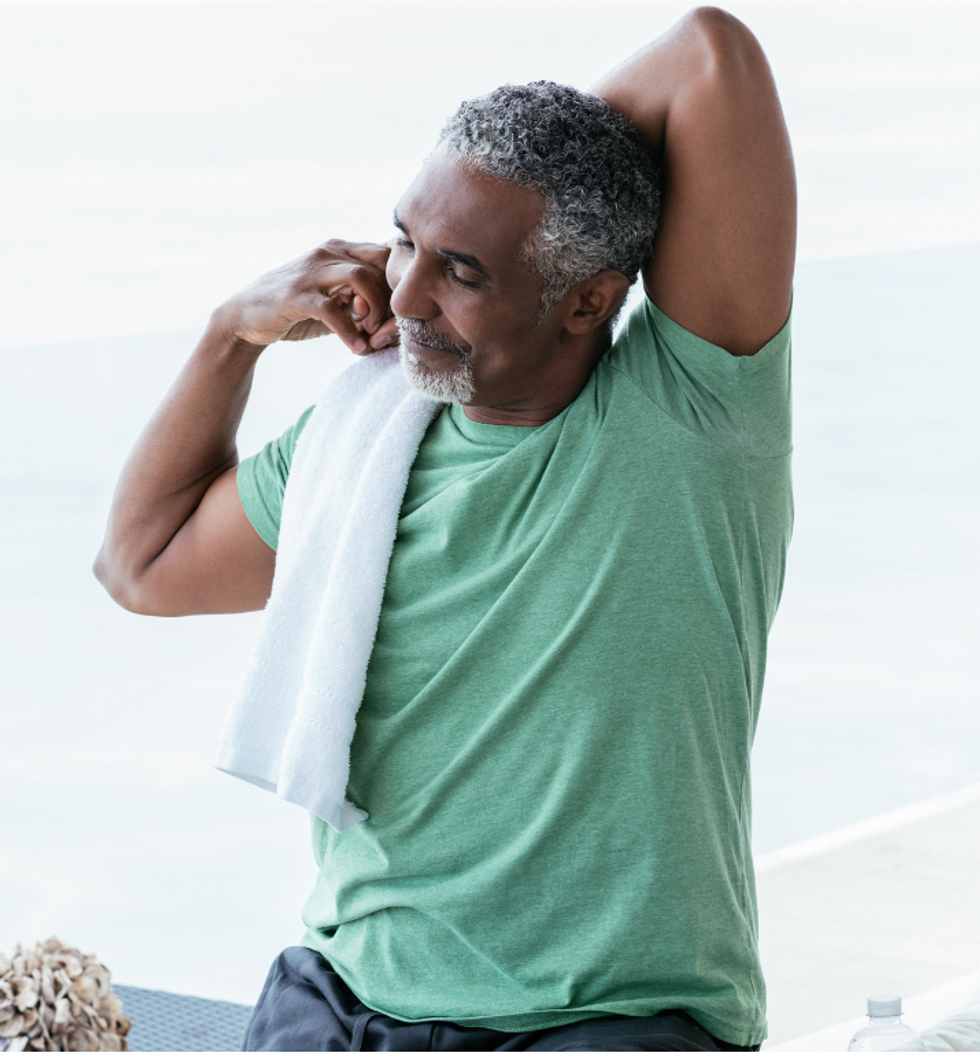Sitting down for too long could cause health problems
GETTY
Sitting for long periods can have several negative health effects
Don't Miss
Most Read
Trending on GB News
For many of us, we may feel grounded to our chairs during the day and stuck on the sofa in the evenings.
The cold and dark weather may put us off from heading outside and being active but according to founder of Bio-Synergy, SAQ coach & NASM nutritionist, Daniel Herman: "Sitting is the new smoking," and we need to keep moving about.
The nutritionist said: "Prolonged sitting can reduce blood flow and lead to higher risks of heart disease. Staying in one position for long periods can cause stiffness and pain, particularly in the back, neck, and shoulders."
Daniel explained that not moving about can have a series of risks associated with it. He said: "Staying in one position for long periods can cause stiffness and pain, particularly in the back, neck, and shoulders. Sitting too much and not moving enough can decrease calorie burning, leading to weight gain and increasing the risk of diabetes. Studies link excessive sedentary behaviour with higher risks of premature death."

Sitting down for so long can lead to weight gain
GETTYFor those of us who know we are sitting down for too long during the day, it may be challenging to know what methods to adopt to break out of the mould of staying in one spot for too long.
Daniel explained that just a few minor changes to your day can help combat sitting down for too long in large periods.
The expert advised using standing desks whilst at work. He said: "Alternate between sitting and standing throughout the day. Ideally, aim for a 1:1 or 2:1 sitting-to-standing ratio."
Whilst performing activities that typically would be done whilst sitting, try to stand and move about to keep your blood circulation moving.
He suggested: "Stand up during phone calls or virtual meetings, take short walks around the office or house regularly."
Daniel added: "Set movement reminders. Use apps or smartwatches to set reminders to stand, stretch, or walk. Track your steps to ensure you meet daily activity goals, for example, 10,000 steps. [You could also] set a timer for 25 to 30 minutes of sitting, followed by a five to 10 minute standing or walking break. This approach keeps your body active and prevents stiffness."
For those who want to push themselves further and break out of constantly sitting, Daniel recommended incorporating mini-workouts into your routine.
He advised: "Do quick stretches like arm swings, neck rolls, or leg extensions every hour. Try squats, lunges, or desk push-ups during breaks."
LATEST DEVELOPMENTS

Stretching is an excellent way to combat sitting for so long
GETTYDifferent types of stretches are beneficial to your body too. Daniel suggested: "Perform cat-cow stretches or spinal twists for back relief. Stretch your hamstrings, quads, and calves to maintain lower body flexibility."
Not only is this good for keeping yourself active, but doing some movement has several other benefits.
Daniel said: "Regular stretching and movement boosts blood flow, which nourishes your muscles and organs. Physical activity, even brief, can improve focus and energy levels.
"Regular breaks can significantly reduce the risk of musculoskeletal pain, cardiovascular problems, and metabolic disorders."







